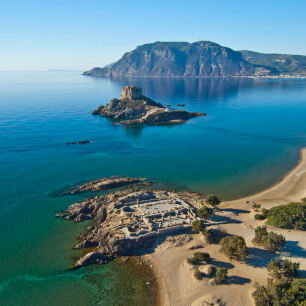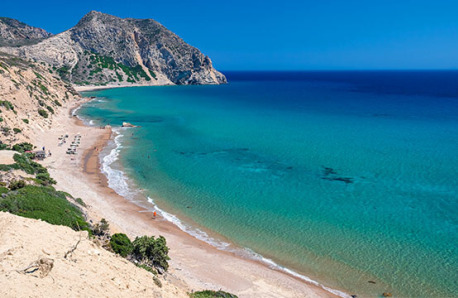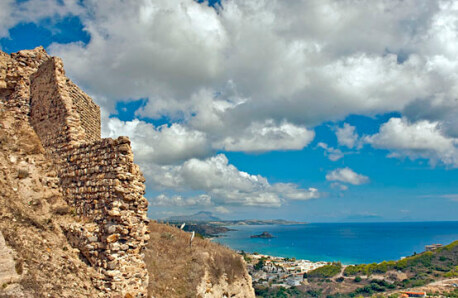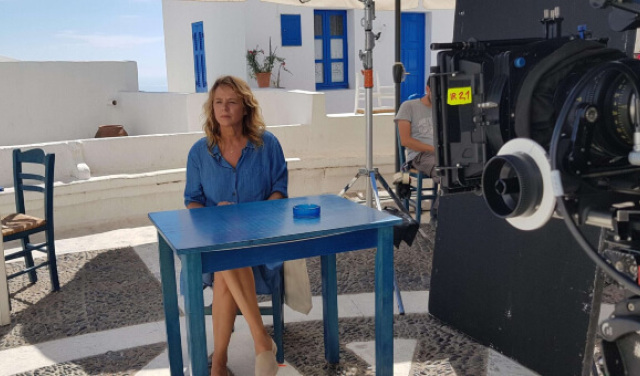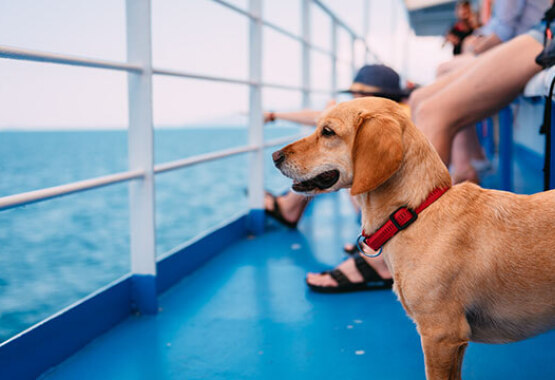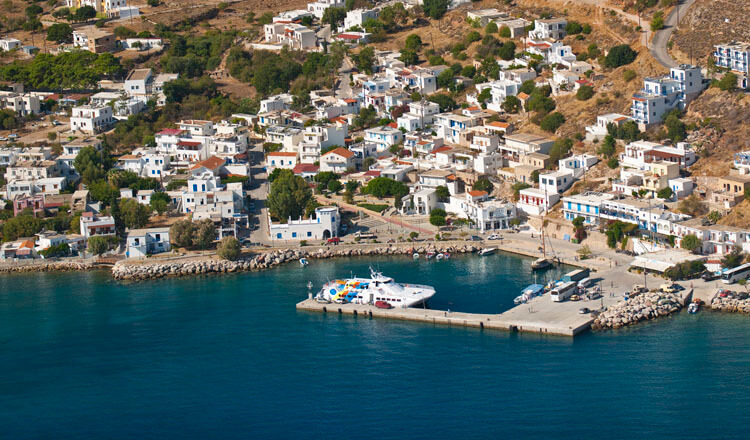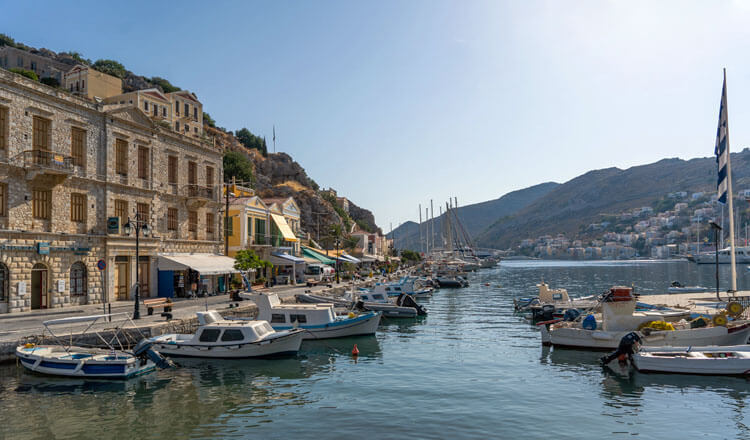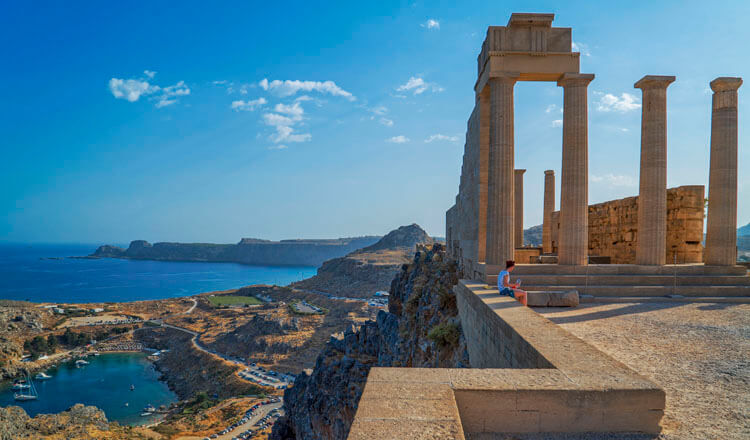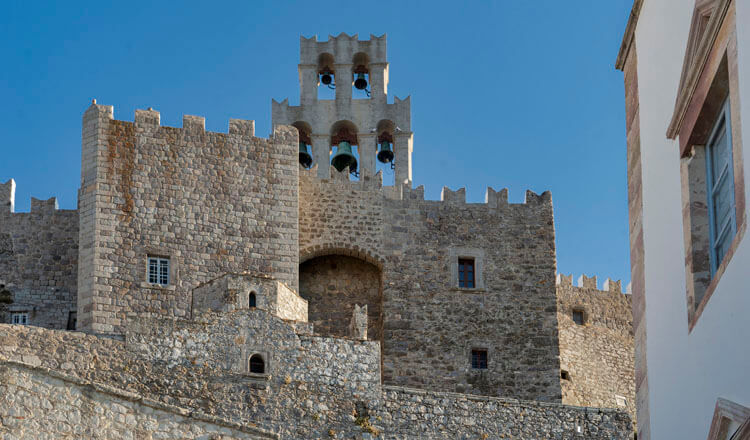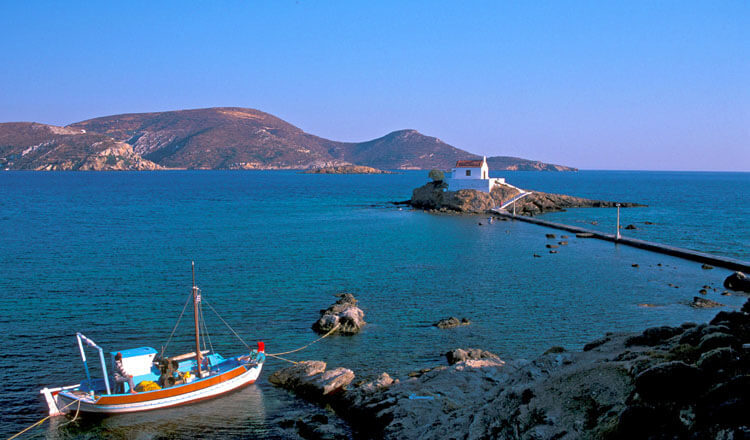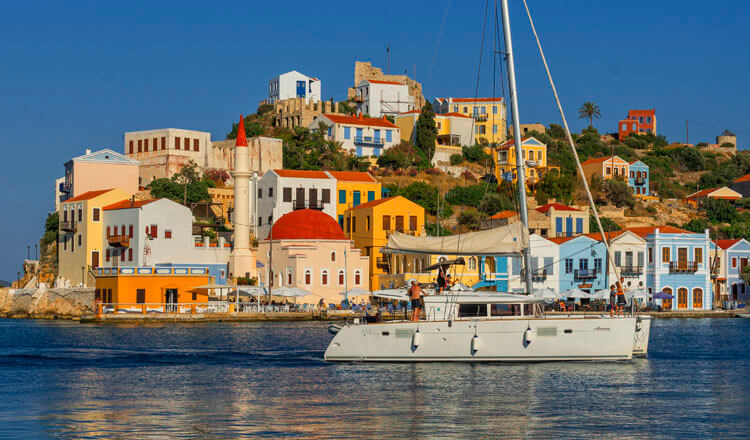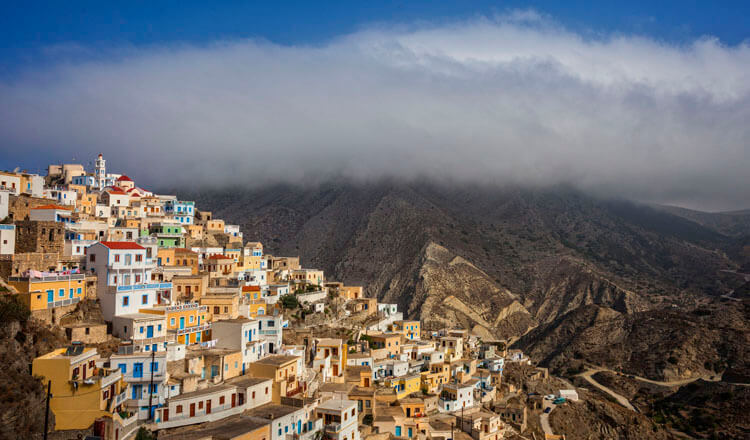Built on the NE side of the island, it has big streets, squares, parks and good urban planning. The diversity in architectural styles will impress you. Italian style structures stand next to small whitewashed island houses, muslim mosques, wall’s dating back to the Knights, apartment buildings and restored ancient public buildings. There is also an extensive network of cycling routes that allows one to tour the town by bike.
In the town of Kos you should visit the mediaeval Neratzias Castle. It’s located at the entrance of the port and is believed to have been fortified since Byzantine times (7th century). The inner courtyard, the four circular towers in each corner and the exterior bastions are exquisite. Two enclosures communicate through a bridge over the moat that separates them.
Stop by Eleftherias Square, the city centre, surrounded by three big buildings dating back to the Italian Rule: the Municipal Market, the LETH Kos Club Officers (during the Italian Rule it was called the Palace of Fascism) and the Archaeological Museum (showcasing a prehistoric collection of artefacts, sculptures and mosaic floors from Roman Buildings of the ancient city) built in 1935, a listed monument of the Italian Rule. Also see the 16th c. Defterdar Mosque.
Go by the ancient capital city 366 B.C., stop by the Doric Hellenistic Temple, Dionysus altar, the sanctuary and the stoa by the harbour, the sanctuary of Hercules, the ruins of the north side of the wall, the Roman baths, the luxury roman estates with elaborate mosaic floors, roman houses as well as the Roman Odeon with a capacity of 750 people.
Walk around the popular Platanou Square where you can see the Loggias Mosque built with material from ancient structures in 1786. Across the mosque don’t miss Hippocrates’ 2500 years old plane tree; it is believed that this is where he taught his pupils and examined his patients. The tree’s trunk circumference is over 10m long and its giant branches lend its shade to the entire square. Enjoy a bike ride or a walk around the streets lined with palm trees and see the mediaeval bridge.
Last but not least, head to the Asclepion of Kos, popular during antiquity, located 3.5km NW of Kos town and built in the 4th c. B.C. following Hippocrates’ death. Also see the stoa, the Roman baths, the Altar dedicated to Helios (sun), Imera (day), Hecate and Machaona (son of Asclepius), ionic temple of Asclepius and the doric temple of Asclepius (170-160 B.C.).
Touring the Island
To the East
Agios Fokas is a rural and popular village among tourists with a beautiful beach. At Embros Thermi or Therma Beach, located 2km NW, there is a well with hot water temperatures that reach 42 to 45 degrees Celsius. During summer the water overflows and pours into the sea. A swim here can be beneficial not only because of the heat but also because of the underwater currents coming from Nisyros’ volcano that reach the spot carrying sulphide (without its known-to-all odour).
Tigaki is a tourist destination with large hotel resorts and one of the most popular beaches on the island. Enjoy the numerous amenities offered on this long stretch of a beach with white sand and blue waters. Go birdwatching at a short distance at Alikes. From here you can follow the bike route to the town of Kos.
Asfendiou is one of the oldest villages on the Dodecanese islands whose history starts from the late 18th c. The village flourished from 1850 to 1930 when locals used to be involved in viticulture and olive growing. Lots of traditional houses still stand tall from that period. Don’t miss a visit by the 11th c. church of Archangels (Asomaton Taxiarchon), the paleochristian basilica of Saint Paul (Agios Pavlos) and the church of Agios Ioannis Theologos Lagoudiou built among rocks.
Zia is probably the most picture perfect village on the island, with its awesome view, whitewashed houses, blue doors and window shades, it holds strong to that traditional island architectural style and is popular amongst visitors. Don’t miss the church of Dikaios Christos on the top of Mount Dikaios, built in 1079.
Pyli is located in the centre of the island where you can visit its old settlement Palaio Pyli (4km NE), its stone built houses, its public square, ancient domes, and the 11th c. fortress with a stunning view on the neighbouring beaches. If you are into surfing then head to Marmari, a charming village popular amongst surfers.
To the West
Famous for its organ players, singers and dancers, Antimachia is a traditional rural village - one of the biggest ones around - built on a low plateau and inhabited since the late Neolithic Era. At 4 km SW is the island’s airport “Hippocrates”. See the local houses, which are typical early 20th c. style. Visit Papa’s windmill and the castle-fortress (4km NE) dating back to the 15th c. extending over 26,250 m2 where you will see its imposing walls, the bastion, house remains and the churches of Agios Nikolaos and Agia Paraskevi.
Head 4 km north to the popular Mastichari Beach where you can enjoy activities or sunbathe, see the remains of a Palaiochristian basilica but also take a boat for a short trip to the nearby island of Kalymnos.
Kardamena is a seaside town built on the ruins of Halasarna (ancient town- Demos). From its harbour, hop on a boat and visit the springs of Agia Irene or enjoy a day trip to the neighbouring island of Nisyros.
Kefalos is a seaside village and ancient capital of the island, built near the ruins of a mediaeval castle. visit the traditional house of Kefalos with folk art exhibits. Enjoy Kamari beach with its long stretch of sand offering numerous amenities as well as the serene Limniona bay. Make a point in visiting Kampos where remains of the 5th c. AD Agios Stefanos Basilica with significant mosaics and columns are located alongside the beach.
It is believed that the ancient capital of the island, Astypalaia, is located 2 km south of Palatia. See the ruins of the Temple of Demeter and the small theatre. Last but not least go by the churches of Panagia Palatiani, Panagia Ziniotissa, Agios Mamas and Agios Theologos.



